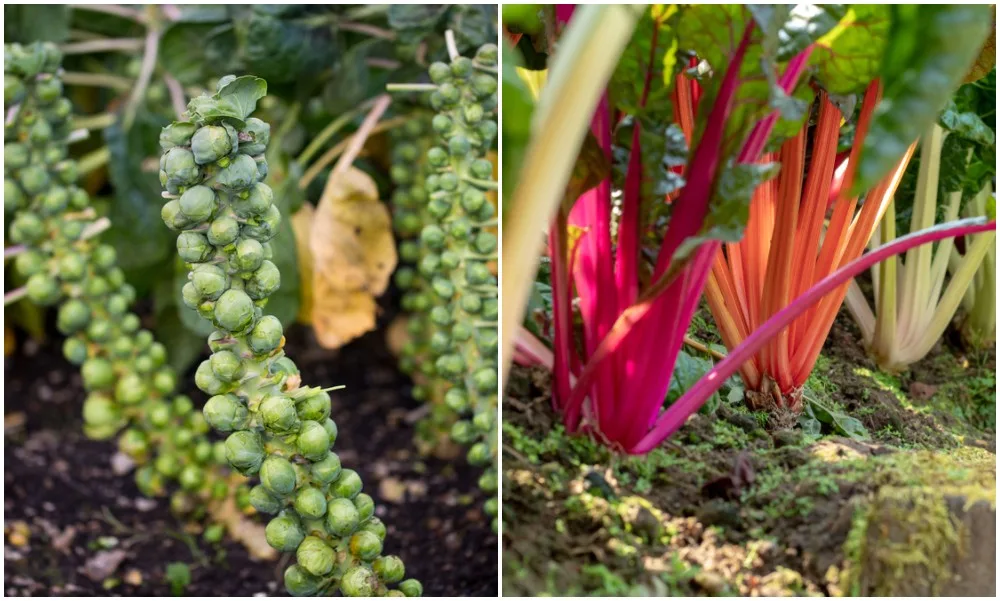
Are your garden harvests smaller than you dreamed of? Have you come to the realization that your garden may be in a less than an ideal location?
Think again.
You may be trying to grow the wrong vegetables, given your climate or access to sunlight. Or perhaps your garden just needs some additional manure or comfrey fertilizer to nourish the hungry plants – or both.
The location and layout of a garden both mean a lot to the success of a bountiful growing season, as does:
- seed selection
- irrigation
- and soil quality
In order to harvest more than enough vegetables and fruits for canning, you can’t have one without the other. But there is one deciding factor that will make or break a garden.
The sun.
Or lack of it.
Sun-loving plants
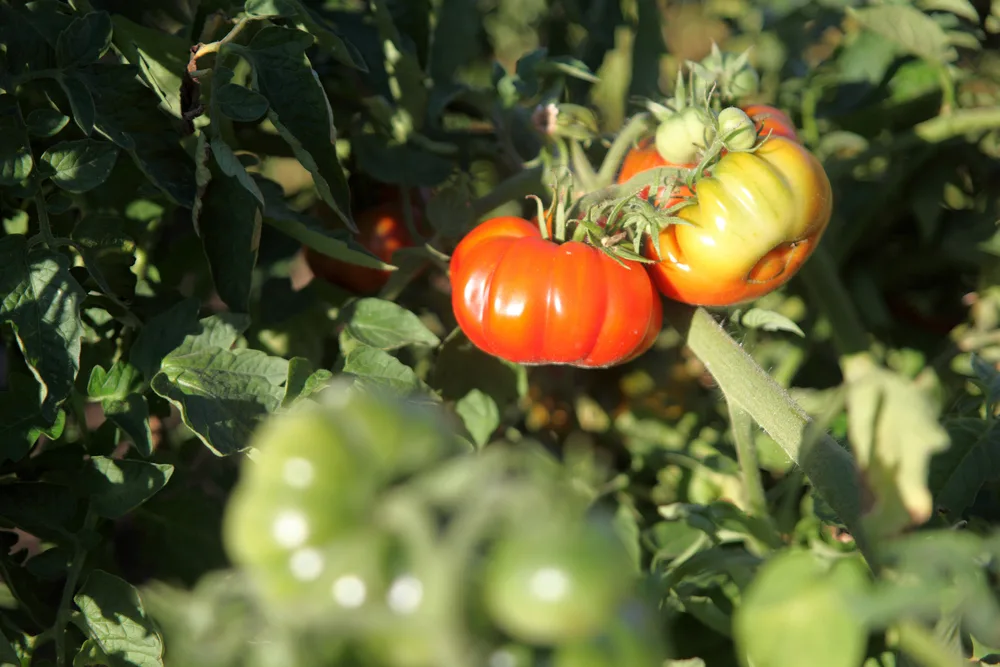
If your garden is located in full sun, you are in luck!
You’ll experience positive results growing the following vegetables:
When you see a plant label requiring “full sun“, it means that the plant will benefit from a minimum of 6 hours of sunlight each day, though they will thrive with 8-10 hours of direct sunlight.
Keep in mind that too much sun, can be too much of a good thing!
Even tomatoes prefer a little shade in the hottest of summers, a little something to prevent sunscald.
Another downside to planting in full sun, is that your garden may need to be irrigated and/or shaded during the driest and hottest weeks.
Trees, buildings, fences – they all provide varying levels of shade at different times of day.
So, if you have a shady patch in your garden, take advantage of all it has to offer, there are a plethora of vegetables that will enjoy it!
Vegetables that thrive in partial shade
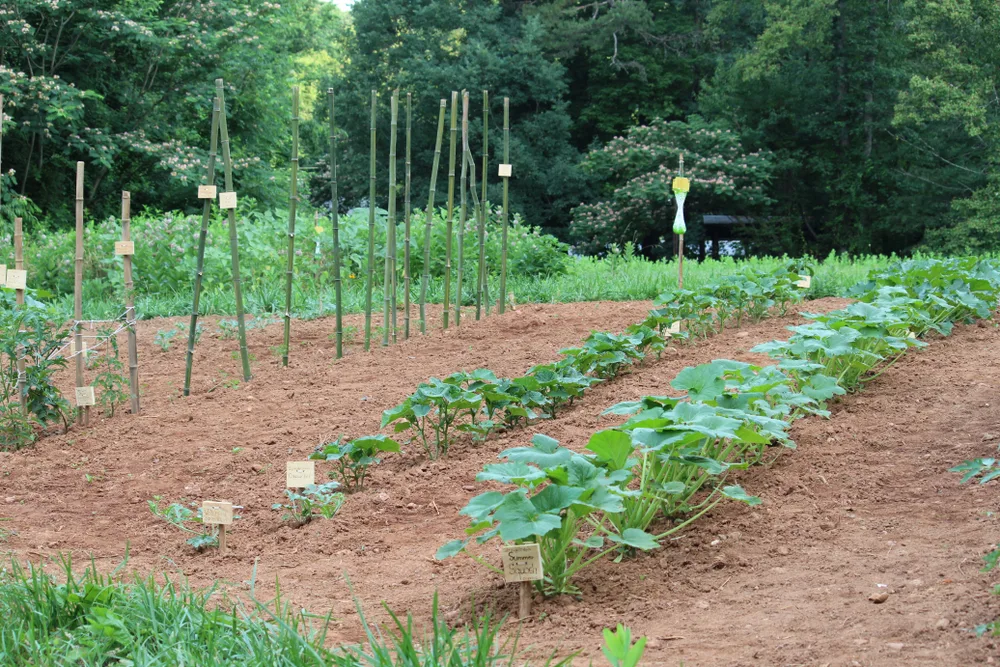
Another way to look at this label of “partial shade” is “partial sun”.
If your garden boasts just 4-6 hours of sunlight a day, the following vegetables are definitely worth a try. Later in this article we’ll share more veggies that can grow in even less sun.
Always remember, with gardening there is no right or wrong answer as to where you plant your veggies, as there are so many variables.
One year you might have a bumper crop, the following year it will go bust. Never let fear of failure prevent you from trying! There is something new to learn each and every season.
I do know for a fact, that planting and caring for perennials has tremendous advantages.
Perennials are low-maintenance, just as they help to build soil. Plus, they extend your garden harvest into spring and fall as they enhance the landscape with their glorious colors and forms. Many perennials will perform well in partial shade.
For the moment, however, let’s focus on annuals that grow abundantly in partial shade.
1. Beets

If you adore beets and have a bit of shade to grow them in, you are going to love them even more!
The roots may be slightly smaller with more shade, than sun, but the flavor is more mellow and decidedly earthy. You will also be amazed by how well the beet greens grow. Those are our favorite part of the plant!
Since you are unlikely to find nutritious beet greens at the store, growing them in the backyard is a wonderful way to introduce them into your diet.
2. Broccoli

Plant your broccoli at the edge of the garden, and leave it alone to bask in the partial sun and shade.
Broccoli is a very easy crop to grow, so long as you keep it watered and free of weeds.
It will appreciate a few hours of shade, after all, it is the full sun that leads to quickened flowering and looser heads – neither of which you want.
Flavor-wise, shade grown broccoli is far better. Try it and taste the difference!
3. Cabbage

With too much sun overhead, the outer leaves of cabbages will tend to dry out, which can result in smaller heads.
Planting them in partial shade (still with 6 hours of sunlight a day) will give the cabbage a chance to flourish in warmer temperatures – keeping in mind that cabbage is a cool season crop and they will bolt when temps soar over 75-80°F.
Cabbage is a wonderful staple crop, outside of sun loving squashes. Make sure to plant some if you have the garden space required.
4. Carrots

Like beet leaves, carrot tops are simply amazing (and truly flavorful!) when minced and added to soups and stews, but of course the root is wonderfully nutritious too.
It is one of those garden items that you can pull straight out of the soil, wipe it clean and munch on straight away.
Carrots come with their own growing challenges, such as nematodes, rotting seeds and gnarled roots, yet they are not impossible to grow – given the right conditions.
5. Cauliflower

Though cauliflower grows well in full sun, it also appreciates shade during hot summers, as it is a cool season crop.
It isn’t the best fit for every garden, or gardener, because it has specific growing requirements regarding safe temperatures, plus it needs to be blanched to whiten/sweeten it.
But when it does grow, there are a million ways to cook with cauliflower!
If it grows where you are, why not try:
No matter how you slice it, dice it or grate it, it will always be delicious!
6. Celery

Not the easiest vegetable to grow in terms of neediness, celery certainly has its charms.
The long green stalks, dipped in peanut butter, or chopped up in stews, added to your farm-fresh Bloody Mary… I can think of several ways to eat up an abundance of celery.
With a shady spot in the garden, you may just love its presence too.
7. Garlic

There is no life without garlic, not in this household anyway.
We consume it raw (or with honey) to stay healthy, we cook with it because it tastes great, and we grow it at home because to purchase it at the market it is super-expensive!
Either that or it comes from China.
Why buy food that travels from so far away when it is so simple to grow in the backyard? Plus, it does benefit from a bit of shade.
Did you know that garlic can be fall planted too? Just another reason to love it even more!
Here are 2 additional ways to use up a bumper crop of garlic, just in case you need a little more convincing:
How to Make Lacto-Fermented Garlic + 5 Ways to Use It
How to Make Your Own Garlic Powder
8. Green onions
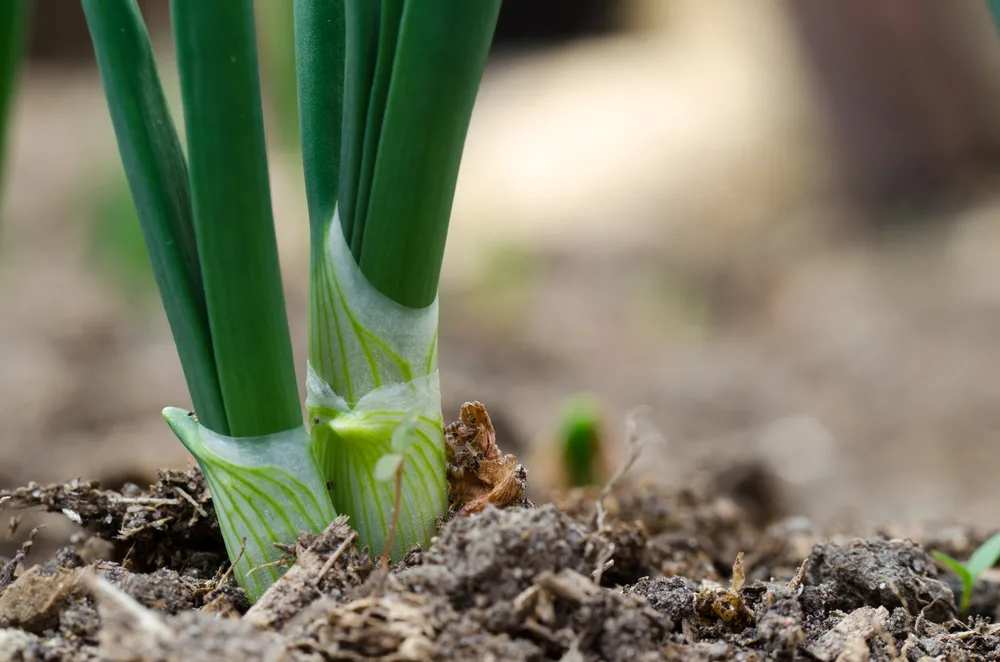
Just as there is no life without garlic, there are few dishes where onions of any kind do not shine. That being said, they prefer not to be in the spotlight of the garden when the hottest rays are beaming down.
Plant green onions or bunching onions in areas with less sunlight and enjoy them all summer long, while those sun-loving plants can bask in all their glory.
9. Horseradish
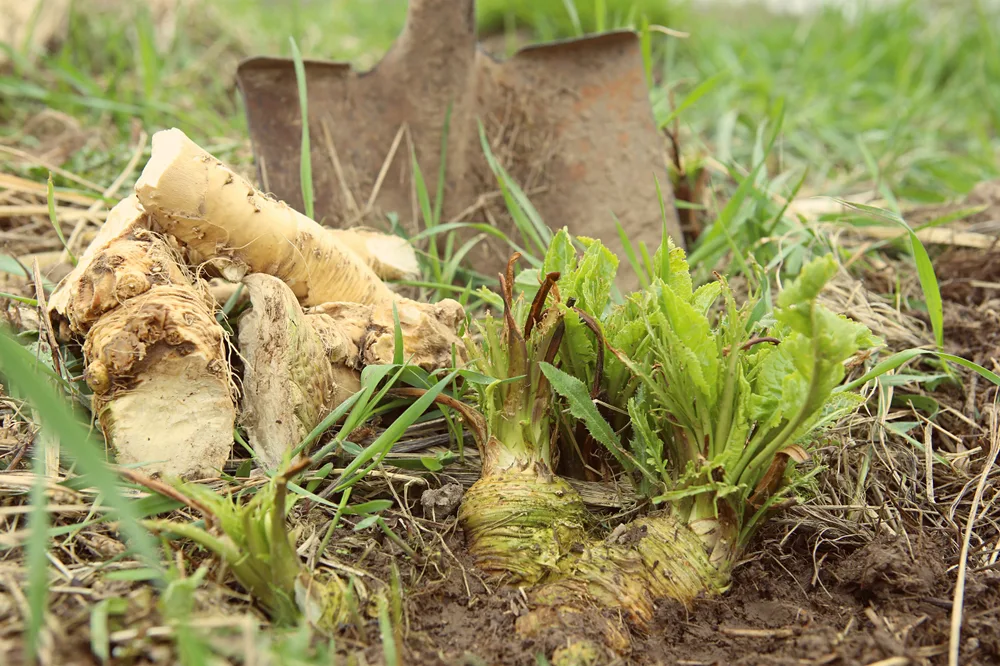
While some may consider horseradish an herb, we like to think of it as a vegetable, especially since it takes up so much space in the garden, and when we grate it, we eat a lot of it at once!
Not all raw, of course, but fried with ground meat or added to chili – once cooked, it loses that certain pungency associated with using a gas mask to shred it.
Horseradish also happens to be a perennial, and will grow just about anywhere in partial shade, so long as it doesn’t get wet feet.
How to Grow and Prepare Horseradish Straight From Your Garden @ Good Housekeeping
10. Leeks
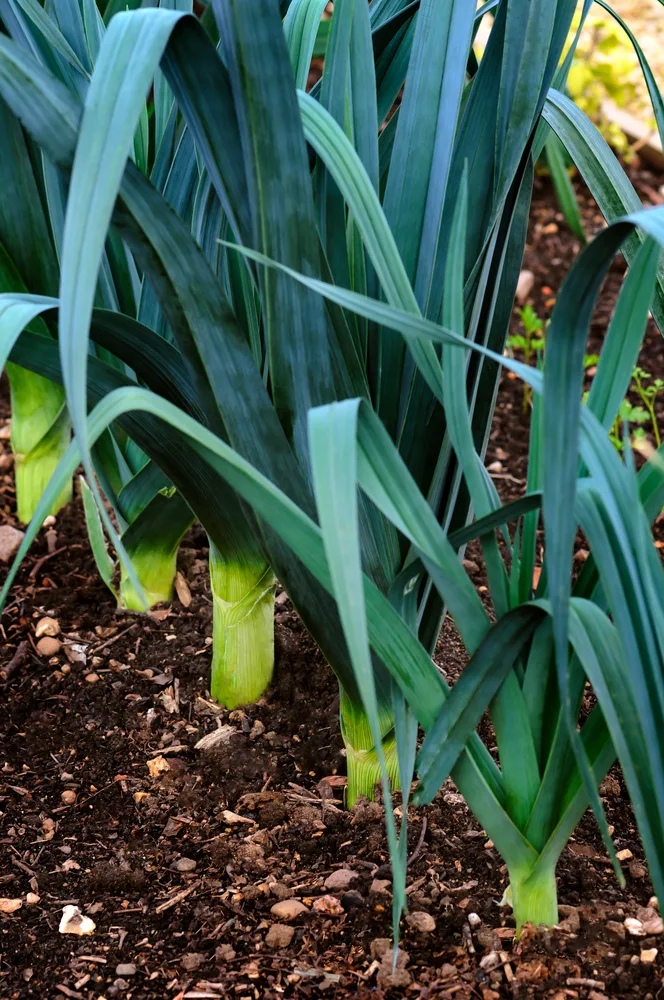
Different than onions and garlic, leeks are a treasure to behold in the garden.
In appearance they are a bit fancier than their Allium cousins, and in flavor they are milder, with a unique texture, making leeks an excellent vegetable for the garden.
Depending on when they were planted, leeks can be harvested from late summer through early spring.
11. Parsnips
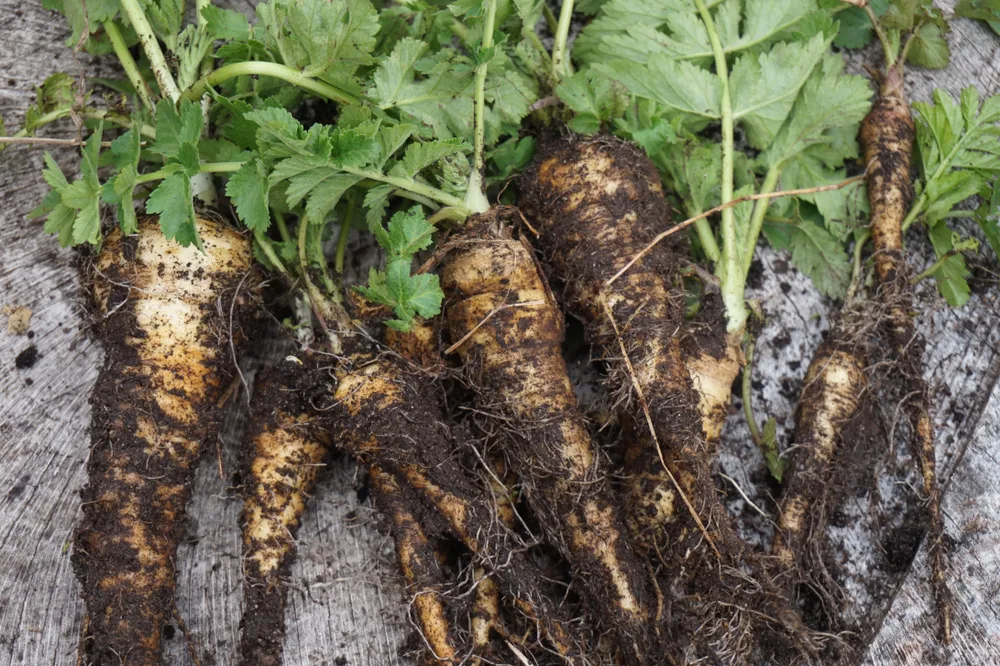
One of the sweetest vegetables you will find in this shade-tolerant list of plants is the humble parsnip.
With a little patience and a pinch of luck, your parsnip seeds will germinate reasonably well in 2-4 weeks!
That is quite some time to wait, yet parsnips are worth it. They can sit in the ground during the winter months, covered with mulch, as they are sweetening with the cold.
In fact, they are one of the few vegetables that taste better after a frost.
12. Peas

If you have a little bit of shade on your patio, yet you desire to care for something other than a houseplant, try growing peas.
Plant them in containers or out in the garden in the shade of sun-loving companion plants such as tomatoes, corn and eggplant.
Peas will also perform well next to other vegetables in partial shade: potatoes, turnips, parsnips and lettuce.
Once you get really serious about gardening, and your garden begins to expand in all directions (sideways, up and deep in the ground) learning about companion planting is a must!
13. Potatoes
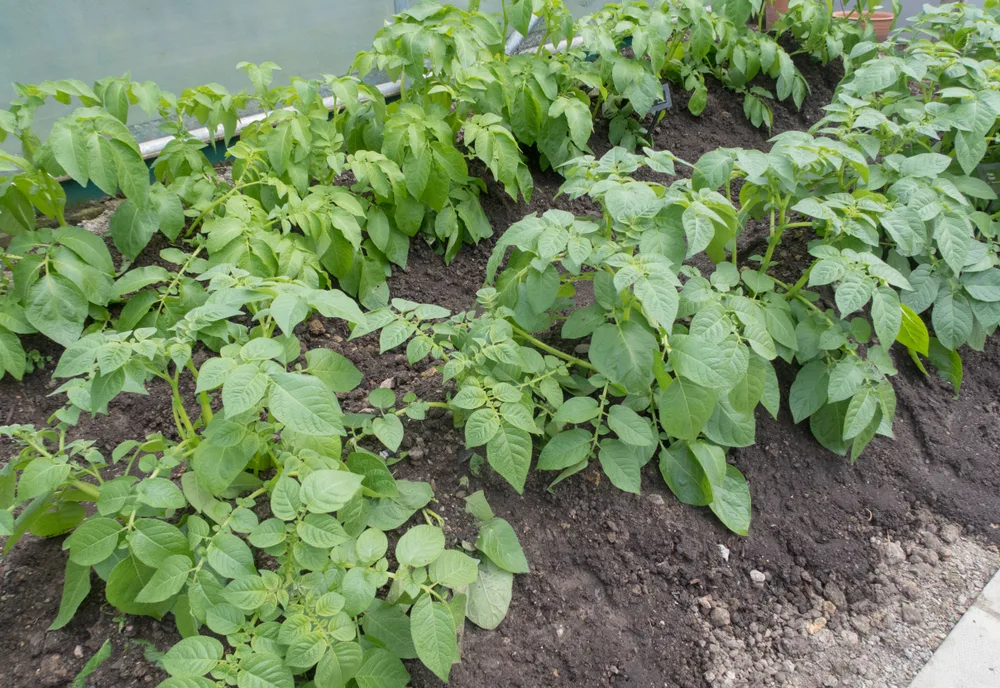
You often see long rows of potatoes planted out directly in the field, but this is not the only way to grow them. See, out in the field there is no chance of shade, just a bright plot of full sun.
If you don’t have 8-10 hours of sun a day hitting your garden, don’t worry, your potatoes under the ground won’t mind one bit.
As long as the flowers have a good chance to blossom under the sun, the plants will actually appreciate a respite from the bright all-day glare.
14. Radishes

Best planted in spring or at the end of summer, radishes really do not like the extreme heat of summer. When you start looking around for varieties to grow, you’ll find that radishes come in all shapes, sizes and colors.
Radishes are wonderful little garden gems because they mature fast, leaving you with plenty of room in the garden for a second crop.
And don’t forget that while the radish leaves are young and tender, they are edible too!
15. Rutabaga (Swede)

Seeds of the rutabaga germinate quickly in 4-7 days, though they are somewhat picky about the temperature. As a cool season crop, anything over 85ºF will promote bolting.
Why grow rutabagas, other than the fact that they do well in partial shade?
Well, they can be planted in midsummer, after your radishes have been harvested for starters, leaving your garden with some kind of cover crop. Remember, that weeds arise because the soil does not like to be bare!
Rutabagas, also called swedes, are more than just a cover crop though, they are incredibly delicious – when cooked the right way. Don’t just think of them as fodder, you can dine on them too!
Try this rutabaga recipe and see what you think:
Roasted Rutabaga With Rosemary and Onions @ Low Carb Maven
16. Salsify
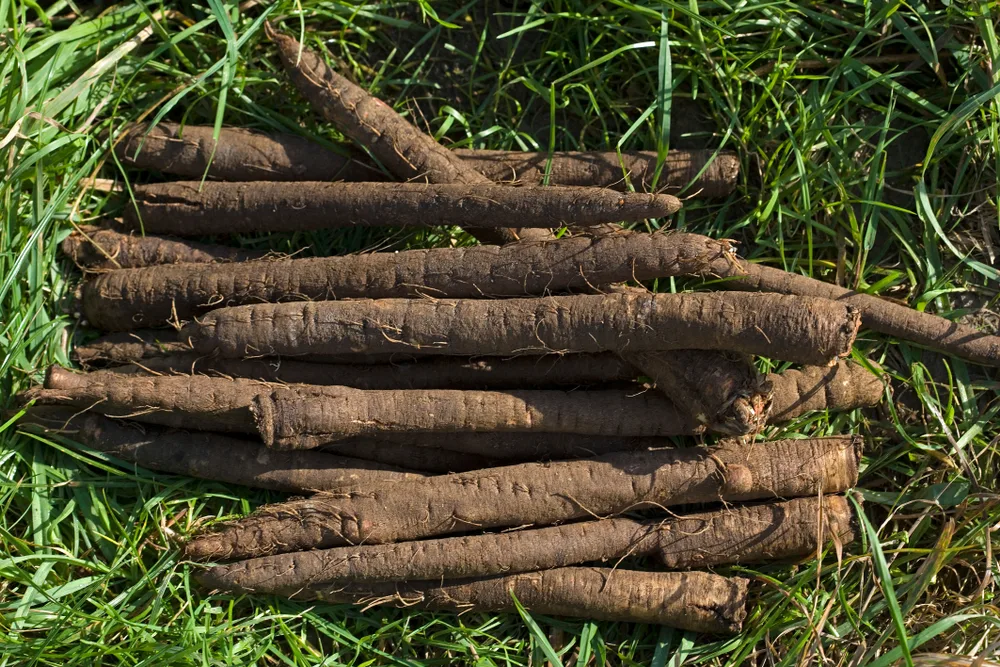
Similar to a parsnip, salsify (Tragopogon porrifolius) is a more unexpected root vegetable to grow.
Cook up the roots by mashing, roasting or boiling, just as you would do for any carrot or potato, and eat the lovely greens. Salsify offers up the best of roots and leaves.
Unusual Roots: How to Grow Salsify and Scorzonera @ GrowVeg
17. Turnips
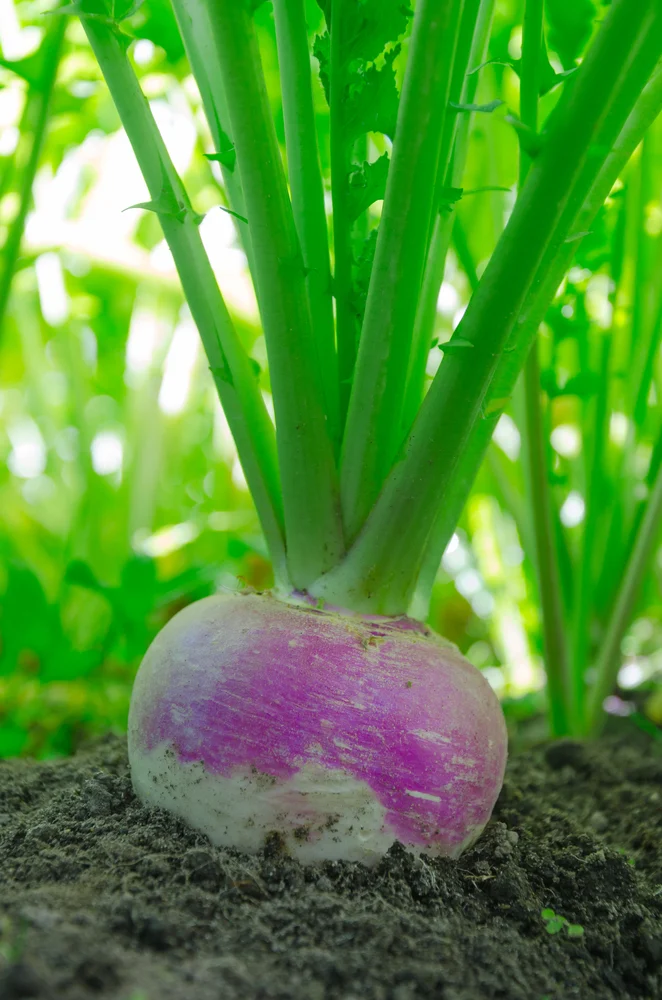
Some may say that turnips are an acquired taste. If that is the case, perhaps you still have some acquiring to do. After all, turnips have been a staple crop, even when other vegetables have failed.
It is a wise idea to plant a row or two of them in the garden – just in case.
Soon enough, you will find out that they really are quite wonderful. Don’t forget to sautée the greens too!
5 Ways to Eat More Turnips @ thekitchn.com
18. Watercress

One more perennial to make the list of shade-tolerant greens, is watercress.
Watercress, a less familiar member of the Brassica family, was once considered a weed, though we know now that “weeds” often contain the highest amounts of vitamins and minerals.
If it is copious nutrition that you are after, make sure to find a place in the shade for a small amount of peppery watercress that you can harvest throughout the year, particularly when grown in a greenhouse.
Vegetables that grow well in shade
By shade, we mean garden areas with access to approximately 2-4 hours of sunlight each day.
Leafy vegetables readily fall into this category, and we all know how good those are for you!
As you are designing and planning out your garden, make sure to include a few of these shade loving vegetables.
19. Arugula (Rocket)

With every peppery bite, you can feel the strength of the sun in arugula. When it is grown in the shade, it will be exactly the same.
If you cannot live without it all season long, be sure to provide some shade for your garden rocket, so that it will not bolt in the heat.
It makes a great companion next to mint, spinach, carrots, dill and nasturtiums.
20. Brussels Sprouts

Another cool season plant that tolerates, even thrives in shade, is Brussels sprouts. They are tiny little cabbages that are perfect in coleslaws, steamed or fried.
Another benefit of growing Brussels sprouts is that they can be harvested well into the winter months.
Use their height to your advantage and plant a shorter season crop between the rows – peas and bush beans are a great start.
21. Kale
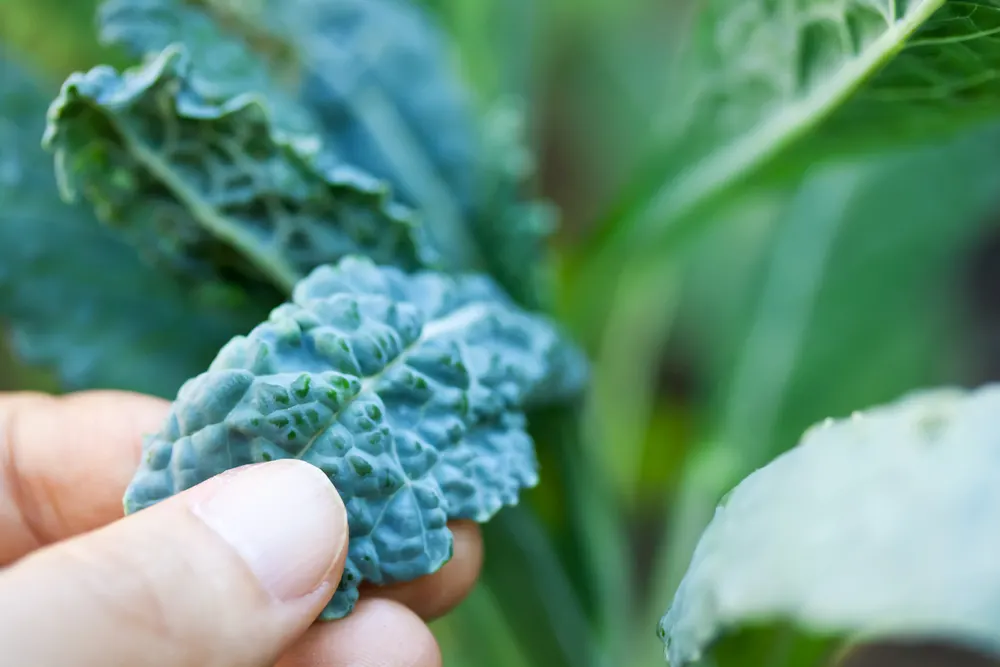
And another Cruciferous vegetable makes the list!
Not only are they good for you to eat, they ornate your shady garden as well. It is a win-win situation.
Especially if you just so happen to like kale chips.
Kale will tolerate cooler temperatures, and will provide you with nutritious greens late into fall.
22. Lettuce

For salads, burger toppings and lettuce soup, you’ll be happy to harvest handfuls of fresh leaves from your backyard garden.
Free ranging chickens and ducks love to forage for weeds, though they will be extremely grateful for the salad bar too, so make sure you have a fence to keep unwanted visitors away.
23. Mustard greens

Collard greens and mustard leaves are often left scorching in the sun. The edges curl and turn brown, it is not a pretty sight. Stress, in turn, leads to other potential diseases.
If you have a nice, shady spot with 4 hours or so of sunlight and are seeking a little green to spruce up the garden, these leaves are up to the task.
When they are ready to harvest, don’t forget to sautée your mustard greens with bacon!
24. Sorrel

Pleasantly tart with a lemony bite, many people shy away from this mouthwatering vegetable. Either because they are not familiar with it, or they’ve eaten it prepared in such a way that the absolute sourness took over the entire dish.
There are 2 shade-loving types to plant in your garden: French sorrel (Rumex scutatus) and Garden sorrel (Rumex acestosa). French sorrel is less acidic and should be appreciated for its refreshing tartness.
Another thing to appreciate about sorrel is that it just keeps growing. Cut a few leaves and they come back. Forget about it, and it will still be there when you dig it out from under the weeds. Sorrel is a true survivor – a plant that we all need in our garden.
Here is one classic way to cook sorrel, so you can fully appreciate the unique flavor:
Sorrel Soup, French Style @ Hunter, Angler, Gardener, Cook
25. Spinach
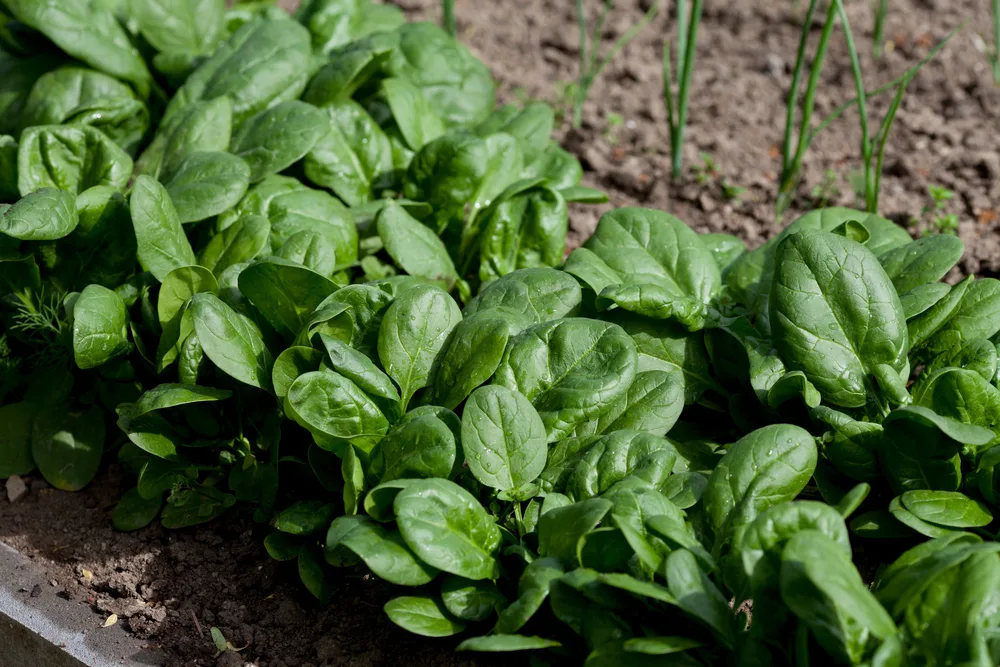
Grow spinach just once, and you will quickly find out that 2-3 hours of sunlight are more than enough to produce a generous green crop.
Of course, like most of these shade loving veggies, spinach prefers cooler weather, so be sure to plant it early enough in the season, keep it watered regularly and give it all the shade it can handle. This way you can harvest tender young leaves throughout the summer.
26. Swiss chard
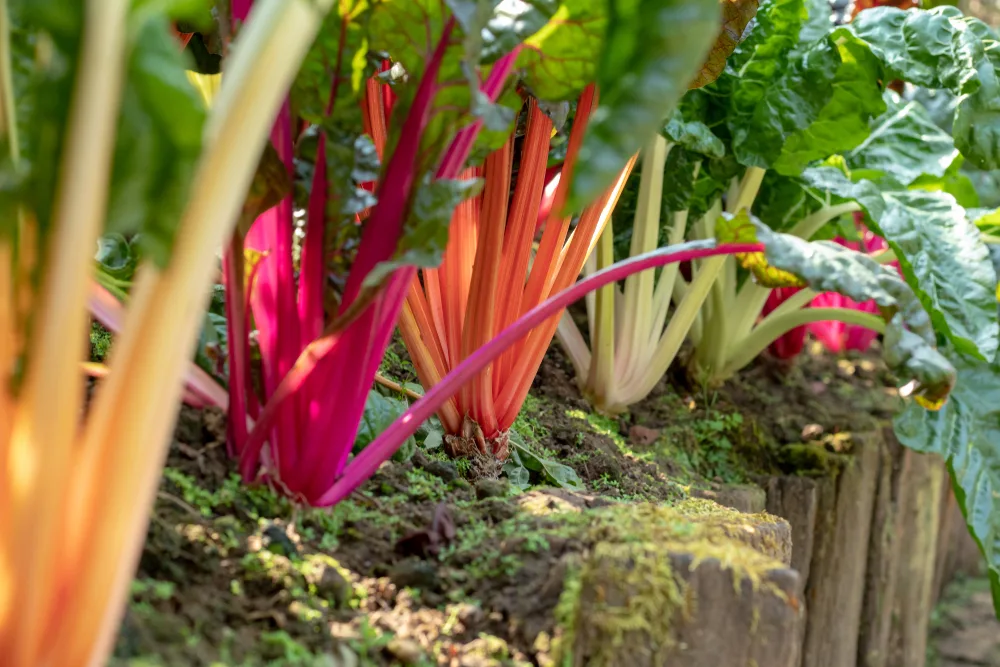
If you are looking for a vegetable that is easy to grow, low-maintenance, yet productive and shade tolerant too, Swiss chard should actually be at the top of the list!
Not only is it vibrantly colorful in the landscape, it is beautiful on the plate and super nutritious, providing you with loads of vitamin A and C, as well as calcium, magnesium, iron and potassium.
Swiss chard is also rich in antioxidants and should be included in your backyard pharmacy among these other 7 medicinal plants.
Get creative with shade!
Areas with deep shade, which receive no direct sunlight, are best left to flowering ornamental perennials, rather than vegetables.
If your garden doesn’t naturally have shade, you can make some by planting with the rise and fall of the sun in mind.
Taller plants such as beans and corn will grow relatively quickly, providing light shade for radishes, chives and other shade-tolerant herbs.
In the heat of summer you may need to use shade cloth, or row covers, in times of excessive temperatures and scorching sun.
You can also get creative with your own shading inventions using materials and skills you have on hand. Burlap stretched over a metal or wooden frame is an unpretentious way to shade your vegetable patch.
You could also try weaving willow, or hazel, frames for your garden, propping them up against stakes to protect your shade-loving veggies from both sun and wind.
A final word about maturation times
You’ll discover through your own gardening experiences what vegetables grow best on your property – how long newly planted seeds take to germinate, how profusely they flower and how many weeks until first harvest.
It is important to note for first-time growers that vegetables grown in the shade often take just a little bit longer to reach maturity than if they were grown in full sun.
If you are planting in shade, it is not a less than ideal growing condition, it is just a different growing condition.
Adjust your expectations accordingly, and enjoy all the beautiful produce from your shade-loving veggies!

Get the famous Rural Sprout newsletter delivered to your inbox.
Including Sunday musings from our editor, Tracey, as well as “What’s Up Wednesday” our roundup of what’s in season and new article updates and alerts.

